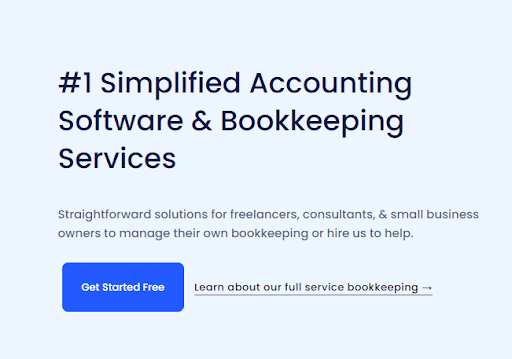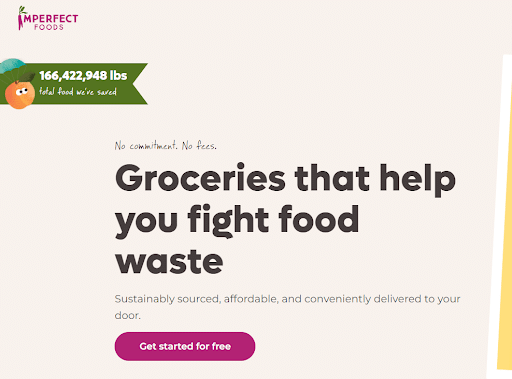What is the value of your brand to customers? This is the question that a value proposition answers. It’s a core piece of how you differentiate your company in the market and defines why someone would want to become your customer versus others.
What You’ll Learn:
- What is a Value Proposition?
- Who Needs a Value Proposition and Why?
- How to Create Your Value Proposition in 5 Steps
- Compelling Value Proposition Examples
- FAQs About Value Propositions
So, What is a Value Proposition?
Value propositions in marketing are short, to-the-point explanations that convey value. Often, they become synonymous with the brand like Vimeo’s “The power of video at your fingertips,” or WordPress’ “Build simply.”
As you can see, these statements are simple and immediately display what’s in them for customers. What’s important in creating one is understanding what a value prop is not. It’s not a slogan, tagline, Vision Statement, or Mission Statement.
- Slogans are catchy campaign-specific phrases.
- Taglines are short phrases that define aspects of a brand and are more of a concept.
- Vision Statements are aspirational and include the company’s current and future objectives.
- Mission Statements are short explanations of a business’s reason for existence, describing its purpose and objectives.
These branded phrases don’t contribute to conversions, which is a primary purpose of a value proposition. Here’s an example to showcase the differences from Nike.
- Slogan: “Twice the guts. Double the glory.”
- Tagline: “Just Do It”
- Vision Statement: “We see a world where everybody is an athlete — united in the joy of movement.”
- Mission Statement: “To bring inspiration and innovation to every athlete in the world.”
- Value Proposition Statement: Customizable performance or lifestyle sneakers with unique colorways and materials.
Who Needs a Value Proposition and Why?
Every brand needs a unique value proposition. Namely, because they are an expression of intent and a “promise” to customers relating to how a company’s products or services will serve them. They focus on the heart of your audiences’ challenges and how you can solve them.
You’re highlighting your distinct value, and it becomes a foundation for inbound and content marketing strategies. They are also instrumental in brand awareness marketing.
This tangible statement delivers to customers what they can expect from your solutions. It can include features, social proof, or other specific benefits.
A well-defined and impactful one can:
- Support efforts from marketing and sales.
- Help with the consistency of your messaging across the company.
- Improve customer engagement and sentiment.
- Address specific needs that are pain points for customers.
Now, let’s review how to write a value proposition statement.
How to Create Your Own Value Proposition
If you’ve never developed a value prop or are in a creative brand refresh mode, follow these four steps.
Step 1: Identify the Major Problem
Start by asking, “What’s your customer’s main problem?”
You may already have internal resources to source this, but it will likely require deeper research to understand your personas and their needs.
You can get input from others in the company, including sales, customer service, and other roles that interact with customers regularly.
You can move to the next step once you know what your customers seek.
Step 2: Identify Your Products’ Benefits
Next, you’ll analyze the benefits of your solutions. List out every product or service you offer and describe its primary benefit.
Whatever you list should focus on the customers’ needs, not your company’s. Be concise and specific.
Step 3: Decipher What Makes Benefits Valuable
After noting benefits, you’ll add more context to explain why it matters to your customers. Keep it short with one or two simple sentences.
Step 4: Connect Benefits and Compare Pain Points
Review your benefits and compare them to your customers’ problems. Do they align? Will any of your benefits speak to your customers’ problems?
If so, you are in a position to establish the value proposition to differentiate you from your competitors.
Step 5: Differentiate Your Company From Competitors
The key to a value proposition is that it shows why your company, product, or service is so valuable. What is it about you that makes you the right choice to solve your customers’ problems?
Work all of these elements into your value proposition.
Once you’ve completed these steps, you can write your value proposition using one of three methods:
- Steve Blank Method: “We help (x) do (y) by doing (z).”
- Geoff Moore Method: “For [target customer] who [needs or wants X], our [product/service] is [category of industry] that [benefits].”
- Harvard Business School Method: “What is my branding? What does the customer hire my brand to do? What companies and products compete with my brand to do this job for the customer? What sets my brand apart from competitors?”
All three methods are effective ways to state a value proposition. You just have to choose the right one for your business.
Compelling Value Proposition Examples
#1: NOVO

NOVO – Value Proposition Example
The Value Proposition: “We make unique watches from really cool things.”
Why It Works: It describes what they do and how they do it.
It’s the first statement on their website, and if you read further, it goes deeper into how they turn historical physical materials into watches.
Not only do they do a great job of presenting value upfront, but they also continue to do so throughout the website by reinforcing the core values of craftsmanship and recycled materials.
Example #2: Stripe

Stripe – Value Prop Example
The Value Proposition: “Millions of companies of all sizes use Stripe online and in person to accept payments, send payouts, automate financial processes, and ultimately grow revenue.”
Why It Works: This example accomplishes several things:
- It draws the audience in with a headline (“Financial infrastructure for the internet”) that clues you into the overall theme of the business.
- It’s declarative as “for the internet.” There’s no room for argument, and it positions the brand as a leader among competitors.
- It follows up with a clear explanation of exactly who the service is for (online businesses) and what it does (handles high-traffic online payments).
Stripe successfully drives home that it’s a platform for businesses driven by innovative tech by leveraging top-name clients and simple graphic design. Every choice made on the website supports the business’ value proposition.
#3: BetterHelp

A customer value proposition example from BetterHelp
The Value Proposition: “With our therapists, you get the same professionalism and quality you would expect from an in-office therapist, but with the ability to communicate when and how you want.”
Why it Works: Mental health is no longer taboo, and people seek resources and the ability to connect virtually. The site immediately addresses the online component and aligns with being a convenient way for people to get therapy.
Example #4: Less Accounting

Example of a Value Proposition
The Value Proposition: “Straightforward solutions for freelancers, consultants, & small business owners to manage their own bookkeeping or hire us to help.”
Why it Works: Less Accounting’s value proposition example works because:
- It immediately addresses who the software is for and that they don’t have the time or resources to dedicate to bookkeeping.
- As you scroll down the page, it presents common customer pain points in a modern Q&A format. It’s different, and I like it. It addresses some of its users’ most common questions and drives home its benefits, all above the fold.
- The website home page also showcases customer testimonials and reiterates the trust factor, which is critical in discussing money.
Less Accounting has done its market research and knows its audience.
As you read the page, the content reinforces the idea of simplicity. They tout themselves as the “World’s Simplest,” clearly separating itself from other leading accounting software by highlighting its unique benefits.
Value Proposition Example #5: Skillshare

Skillshare Example
The Value Proposition: “Explore your creativity with thousands of hands-on classes.”
Why it Works: Skillshare makes its purpose clear: it’s an online database of classes designed for anyone to take.
The first sentence appeals directly to its target audience: creative minds who desire to learn and improve, perhaps without the resources to do it. Further down, it expands the value prop in a list of action-focused ways to get creative—learn, tune in, go from dabbler to master, and connect.
It serves up all the valuable ways someone can use their platform to become better at anything.
Example #6: Tortuga

Tortuga Backpacks
The Value Proposition: “Bring everything you need without checking a bag.”
Why it Works: This one focuses entirely on the brand’s biggest benefit: the ability to pack everything for a trip in one bag.
The target audience here is young backpackers or frequent weekend travelers, and it addresses the most significant obstacle most travelers face: who wants to pay bag check fees?
Additionally, putting the star review right at the top of the website delivers social proof that its ideal customers deem essential.
Example #7: Bitly

Example: Bitly
The Value Proposition: “Create short links, QR Codes, and Link-in-bio pages. Share them anywhere. Track what’s working, and what’s not. All inside the Bitly Connections Platform.”
Why it Works: Known for reducing the size of lengthy URLs, Bitly is all about keeping everything short and sweet. So, it’s no wonder that the company’s value proposition would also reflect these attributes.
The words that are the meat—create, share, and track. It also conveys how simple it is to do all these things within one platform.
Value Proposition Example #8: Mint

Value Proposition: Mint
The Value Proposition: “Managing money, made simple.”
Why it Works: Mint’s value proposition immediately captures your attention with its simplicity. To support the key concept of managing, they also include that it’s the number one downloaded financial app and a testimonial. Reviews and FAQs also continue this focus throughout the site.
Example #9: Imperfect Foods

Imperfect Foods – Example
The Value Proposition: “Groceries that help you fight food waste.”
Why it Works: The way consumers grocery shop has forever changed, with more people shopping online. Many eco-conscious people are also trying to fight food waste. The message is straightforward and illustrates that they are sustainable, affordable, and convenient.
Value Proposition Example #10: Trello

Value Proposition from Trello
The Value Proposition: “Trello brings all your tasks, teammates, and tools together.”
Why it Works: Software like Trello, which is part project management and part collaboration, is more critical than ever with many remote teams. Many companies are looking for a turnkey solution instead of using multiple systems. The company conveys that you can have it all in one spot.
Example#11: Pagely

Pagely
The Value Proposition: “Managed WordPress hosting solutions you can trust.”
Why it Works: The opening sentence and the paragraph under focus on the trustworthiness of their managed services. It’s an important component when discussing a website. The brand also talks about uptime and durability, two things every brand wants in a website partner.
Example #12: EveryPlate

Value Prop From EveryPlate
The Value Proposition: “Make affordable, crowd-pleasing meals at home.”
Why it Works: Cooking at home needs to be simple, tasty, and cost-effective for most people. They also don’t have the time to meal plan, and EveryPlate can handle that. Under the main header, they also continue this theme by spelling out how it works and reiterating that it saves time and money and the cooking is easy.
Example #13: Evernote

Value Proposition – Evernote
The Value Proposition: “Tame your work, organize your life.”
Why it Works: Evernote is a smart app that makes notetaking, task management, and scheduling a breeze. The company realizes that we’re all drowning in stuff to do, and they can relieve some of that stress. The rest of the home page continues the theme of keeping you organized and uses the clever phrase, “Find your productivity happy place.”
Value Proposition #14: Canva

Canva – Value Proposition
The Value Proposition: “Canva makes it easy to create professional designs and to share or print them.”
Why it Works: Canva is the non-designer’s go-to for designing just about anything. The value proposition emphasizes that it’s easy to use while noting that the finished products are professional. It also tells you what you can do with what you create. The imagery gives visitors a preview of all the possibilities while leaving lots of white space so as not to overstimulate.
Value Proposition Example #15: Studio Neat

Studio Neat
The Value Proposition: “We design tools for people.”
Why it Works: This simple brand has a very minimal value proposition. Further down, they explain a bit more as a statement from the founders, “We are two designers who enjoy making simple products that solve problems.” They don’t need to say much more and let the products speak for themselves.
FAQs About Value Propositions
1. What is a value proposition?
A value proposition is a statement of what’s different and highly valuable about your product.
2. Why is a value proposition essential for businesses?
A value prop demonstrates your “promise” to customers, highlighting what you do and how it serves them. It can address needs and pain points and is vital to converting prospects.
3. How do value propositions differ across industries?
Value props are all unique and focus on who the audience is and their specific needs. Some of the biggest differences are B2B vs. B2C. The former is focused on solving business problems, while the latter involves a consumer’s needs.
4. What are common mistakes to avoid when creating a value proposition?
It shouldn’t be salesy or all about the brand. It should also identify and speak to the customer. Long and complicated value props are likely to become confusing. It also must be unique and not generic.
5. How often should a value proposition be revisited or revised?
It depends on when things “change” internally, such as adding new products, moving into new markets, or during a complete brand refresh. At a minimum, you should freshen them up annually.
6. How do value propositions relate to brand positioning?
A value prop describes how your company stands out in the industry, and that would be part of your complete brand positioning strategy. The positioning is much broader, typically developed after the value proposition is in place.
Meet Your Branding and Strategy Goals with Ignite Visibility
Whether you need help with value propositions, brand positioning, SEO support, or anything in between, we can help.
Our digital marketing experts have helped many companies strengthen their marketing strategies and campaigns, realizing increased brand awareness and revenue.
We’ve worked with companies in all industries from home services to auto shops to healthcare companies, and everything in between.
Let’s talk about how we can create some exceptional things. Get in touch for a chat today.

